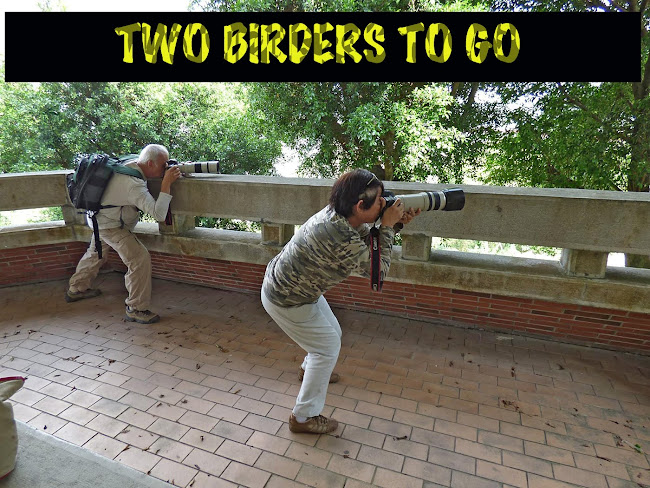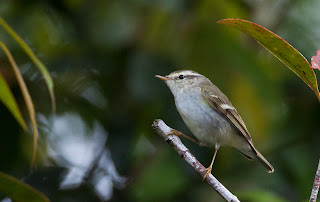After seeing my nemesis bird at last at John Baca Park in Orange County, we went to Bolsa Chica, a wetland area right next to the Huntington Beach Park (which abuts the Pacific Ocean). Unfortunately, it was the "gap" period. That time when birds that spent the winter here were now on their way to the Arctic while those that enjoyed the tropics still hadn't arrived. Nevertheless I was still rewarded with some good views of the "locals".
 |
| Blue-winged Teal |
 |
| Greater Yellowlegs |
This is also where I would always find the Golden-crowned Sparrow.
Next morning it was Legg Lake for me. For sheer diversity of bird species, this is the place to be. Consider seeing an American White Pelican swimming on the placid lake while in the trees next to the body of water Cedar Waxwings enjoy bountiful fruits.
On the fourth day was a long trek around the hills of Frank G. Bonelli Regional Park. This was where the puzzle of taxonomy was so vividly illustrated. Try differentiating these two separate distinct species of Grebes:
Then wonder why these two Juncos which were obviously so different in coloring from each other was considered as a single species!
For our final birding day, we returned to the sea. This time at Playa del Rey, not that far from the LAX Airport. Again, the "gap" was quite noticeable here. Luckily I was able to photograph two of my target species right where I expected to see them.
 |
| Surfbird |
 |
| Black Oystercatcher |































